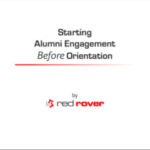The following is the second part of our assumptions, pulled from our “Guiding Principles” Wikipage.
Here is Part 1**
Assumptions Part 2:
These are broad based and not as set as principles. It’s useful to list assumptions, just to be clear on the thought behind the system. Some of these are more controversial than others. Some were controversial when we started and are not anymore. Some we believe wholeheartedly. With others, we just needed to pick a side.
On Interface / Web 2.0
-
- Tags are the way to organize things when the things change all the time. (They are flexible, adaptable, surprising, and folksonomy is fun to say.)
- “Works well” is pretty.
- “Good design is clear thinking made visible.” -Tufte
- Bottom -> up organization releases some of the incredible power stored at the edges. This is great for students. It’s also good for shrinking school budgets.
- Top-> down organization is old school. Loosen up. If your school is erring on the “we tried it” side, that’s a good sign. Buy insurance and leash your lawyers.
On Education
- Digital portfolios will become the new grades. Shorthand points systems will develop (probably relying on a fair amount of peer feedback, see above, think eBay) where the professor is just one of many inputs.
- These systems will be transparent and real time, giving learning a video game interface. (Think character development in a role playing game.)
- Aggregated digital portfolios with tags on timelines will result in automated, personalized recommendations. Sophomores like you liked these classes. Click here to sign up. Click here to see the collaborative notes from years past. Click here to see a list of available mentors who match your life vector.
- Aggregated digital portfolios will exist outside the control of the school systems.
- Students will use free software to see what school is currently the best match for their interests. (Think shopping for books on Amazon.) The enrollment process will dramatically change because of this automated matching.
- Every student is at a different place. Each +1 has a different x starting place, different maturity, and different vector of relevance. Personalized customization will be the norm and expectation all the time.
- Engagement is paramount. Relevancy (when defined by right info, right schema, right time, right packaging/ delivery) is 40% of engagement. The other 60% is emotional attachment to community.
On Orientation
- Everyone wants an introduction. Preferably, to people who are like them. Especially when entering anything new where we don’t know anyone yet.
- Common interests are a great place to start relationships. Embracing diversity comes later. It is bad to force too much diversity too fast or let people stay in their comfort zone. This balance will be different for each student.
- The process outlined above will be visualized with the social graph. It, too, will look like a video game.
- Relationships get better in the real world. Online is a good place to introduce and warm things up.
- Orientations should not be only online.
- Orientation should use online components to make the real world aspect better.
Stay tuned for Part 3.





